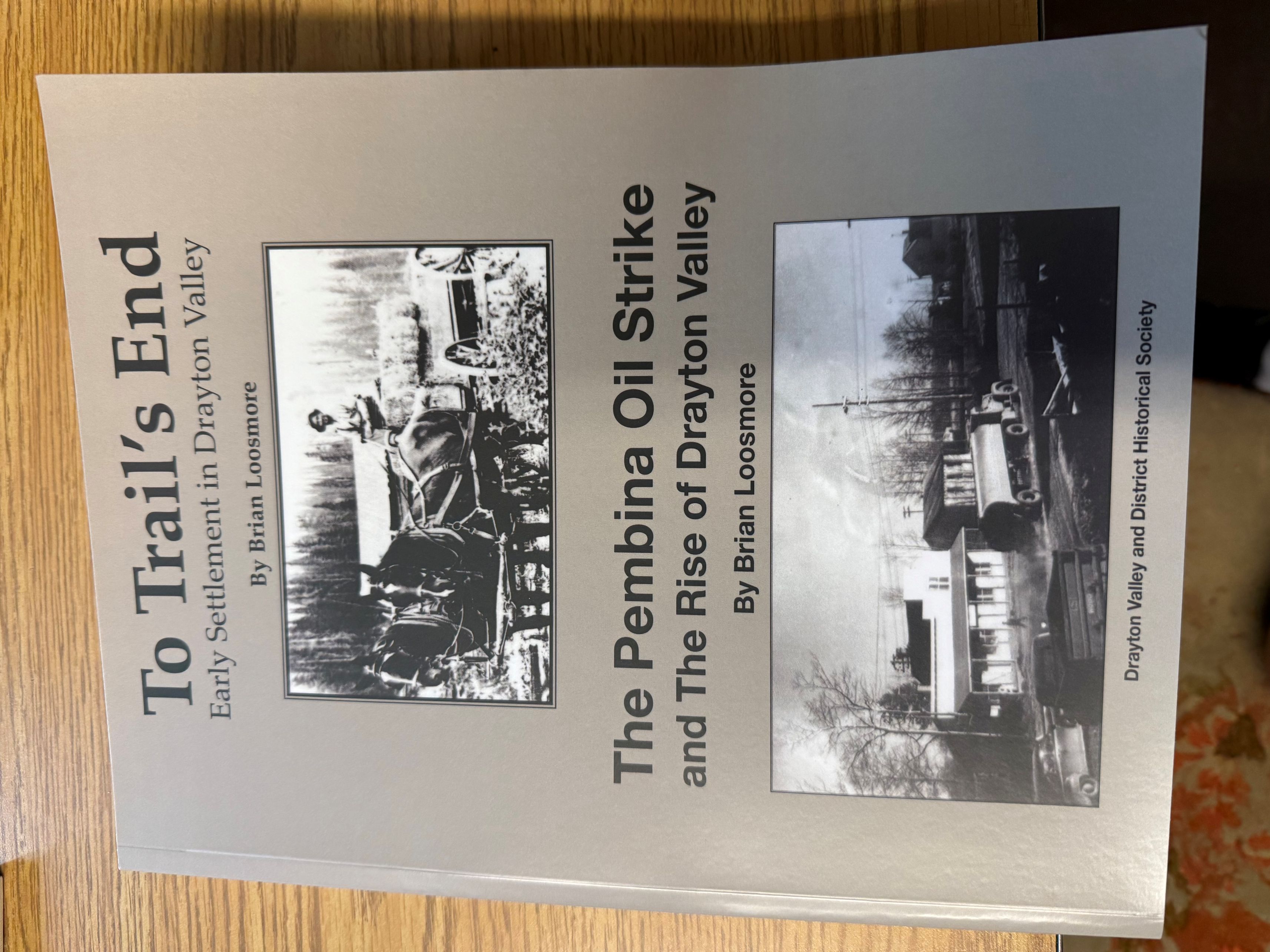Store
 To Trail’s End: Early Settlement in Drayton Valley and The Pembina Oil Strike and the Rise of Drayton Valley by Brian Loosmore are now available for purchase from the Drayton Valley Museum & Archives.
To Trail’s End: Early Settlement in Drayton Valley and The Pembina Oil Strike and the Rise of Drayton Valley by Brian Loosmore are now available for purchase from the Drayton Valley Museum & Archives.Price: $40 CAD + postage
For more information or to order a copy, please call the museum.
Excerpt from the introduction of To Trail’s End: Early Settlement in Drayton Valley and The Pembina Oil Strike and the Rise of Drayton Valley by Brian Loosmore:
If anyone who turns the pages of this book obtains from them even a small part of the pleasure and satisfaction I enjoyed whilst preparing it, I shall be more than content. It is not—indeed, never was—intended to be a comprehensive history of the beginnings of Drayton Valley, my purpose being merely to try to give an impression of what life here was like before the discovery of oil. Many people lived here who are not mentioned in these pages, but they must not be forgotten. Even the fairly recent past is farther away than we suppose, but I hope this volume will enable us to view it less dimly. My greatest desire is that our younger generation—historically blind, mesmerized by materialism and tantalized by television—will browse in these pages and come to realize what struggles took place to give them the comforts they now enjoy.
My original project was to collect old photographs, and to this end I called on many of the old-timers and their descendants who still live here. In every case I was met with kindness and encouragement whilst family albums of remarkable quality were produced, and I was allowed to copy anything I wanted. At other times boxes of old, faded pictures, covered in dust and other unrecognizable debris, were pulled from under beds and searched through with magnifying glasses, giving rise to heated debate about persons and dates. I made copies of all I found and these negatives now form part of the archives of the Drayton Valley and District Historical Society. A selection is produced here. The quality of many of the pictures leaves much to be desired, but most were copied from small snapshots, often faded, stained or cracked, and much effort had to be made to produce an acceptable print.
As the photo collection grew, I gleaned much information about the history of the area, and this forms the basis of the text. I hope this text and these pictures will tell something of the history of old Drayton Valley which would otherwise soon be lost.
Whether the people shown here were wiser or happier than the present inhabitants is probably irrelevant, but what does become apparent is that they were different and that they lived different lives. Their plod of daily life took place in a remote backwater of this huge country, and they had a relatively peaceful existence in quiet surroundings. There was no local history to dwell upon and no differences in social standing with which to be concerned. Drayton Valley history is full of the clank of horse harness and the rustle of heavy winter wraps, but the background to life must have been unchanging as the years and wars went by, a hard-working and mainly insecure life, until 1953, when it changed suddenly and forever.
Many people have helped in the formation of this book. The members of the Drayton Valley and District Historical Society have all been enthusiastic and encouraging, but special mention must be made of Mrs. Eleanor Pickup who has spent so much time tape-recording interviews with “Old-Timers.” Thanks must also be extended to Mrs. Mary Burrows who allowed me to quote from her book, Memoirs of the Mission, and to the Western Review for several extracts from their pages. My unbounded thanks goes to all others who contributed in any way.
W.S.B. Loosmore,
Drayton Valley,
December 1993
